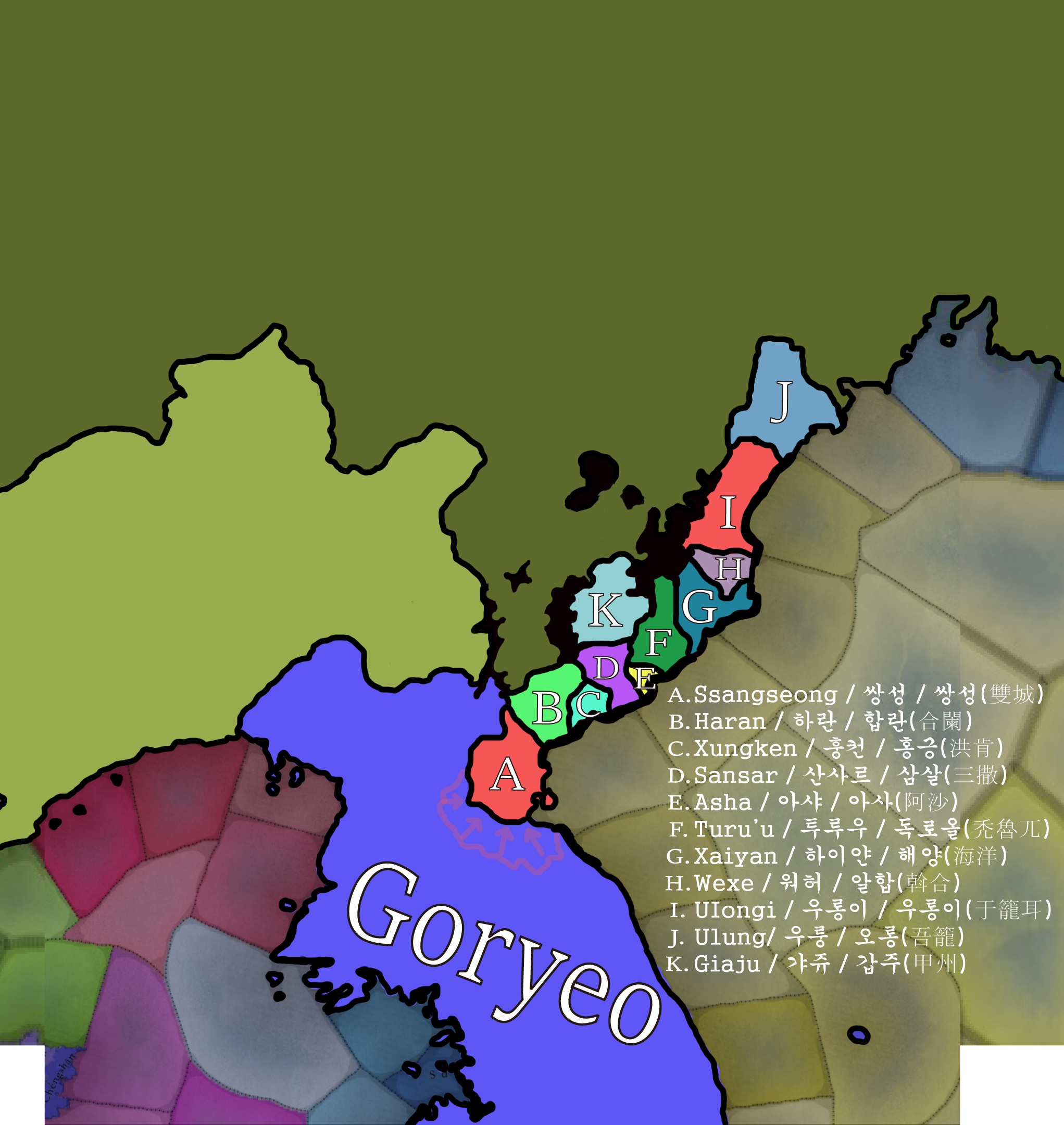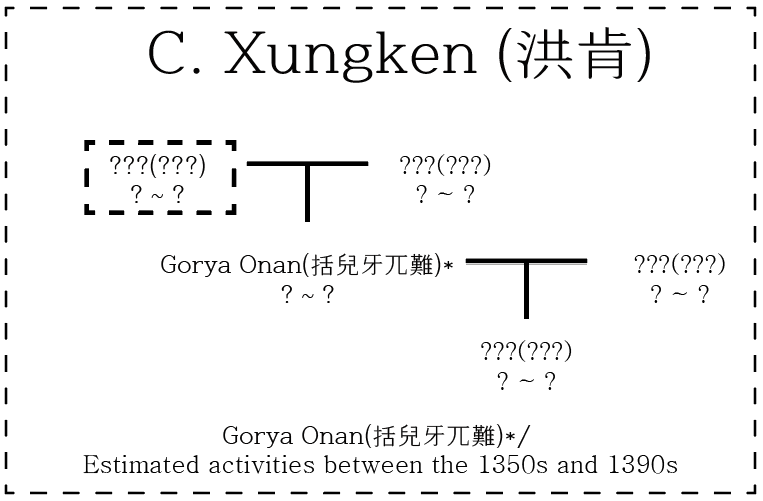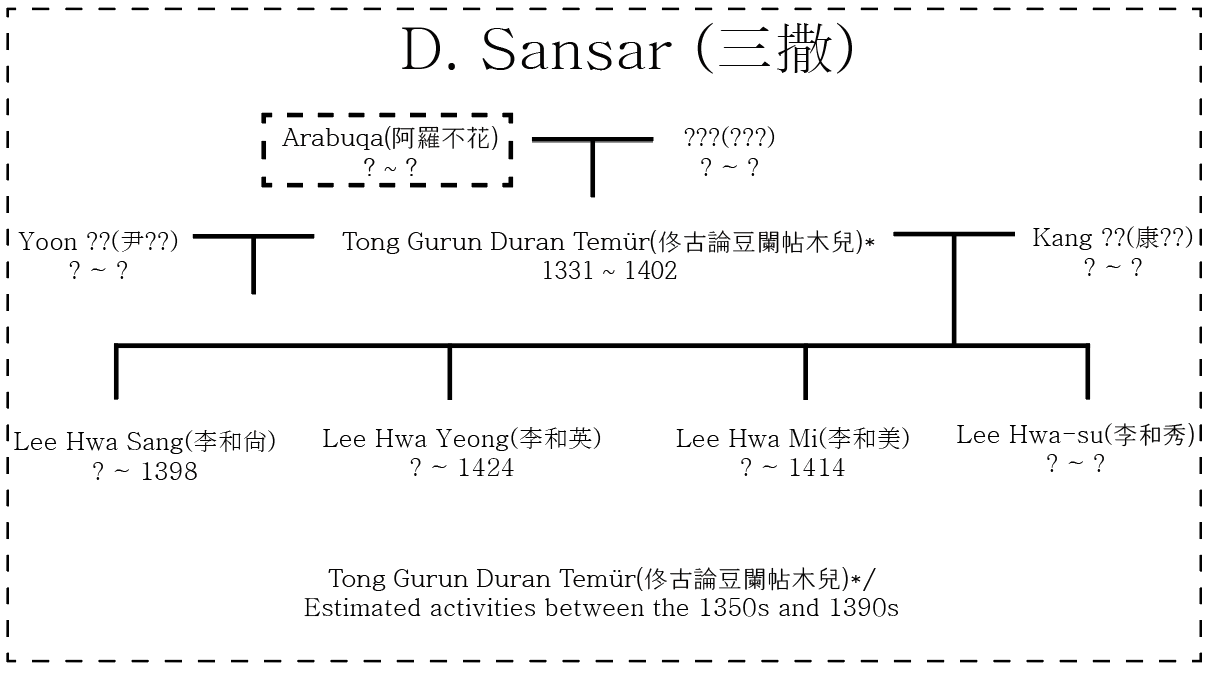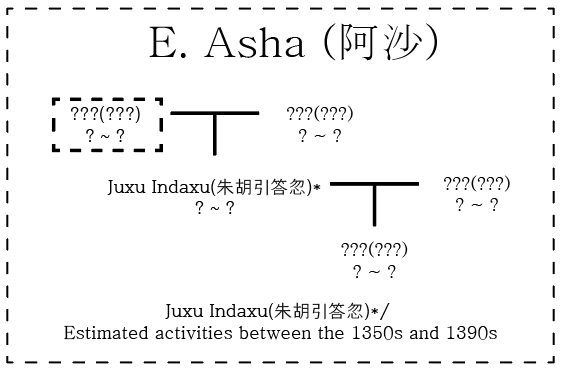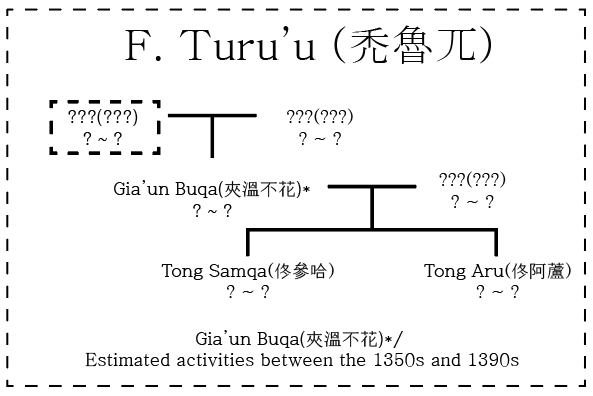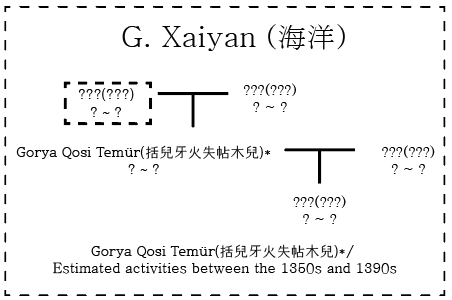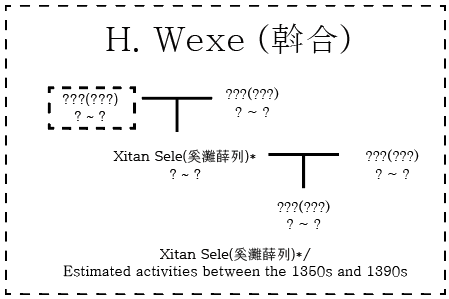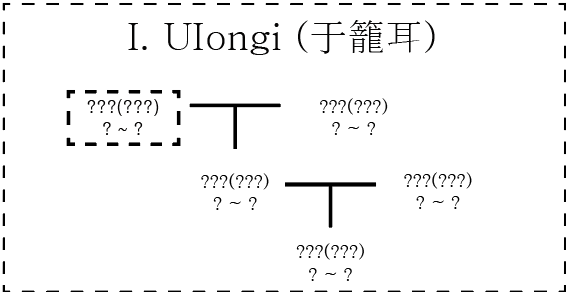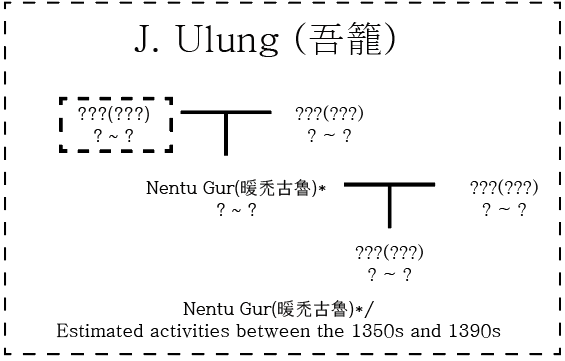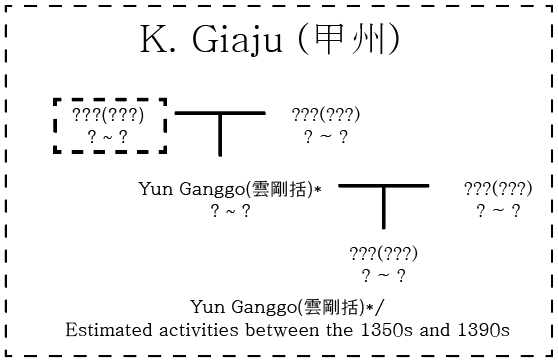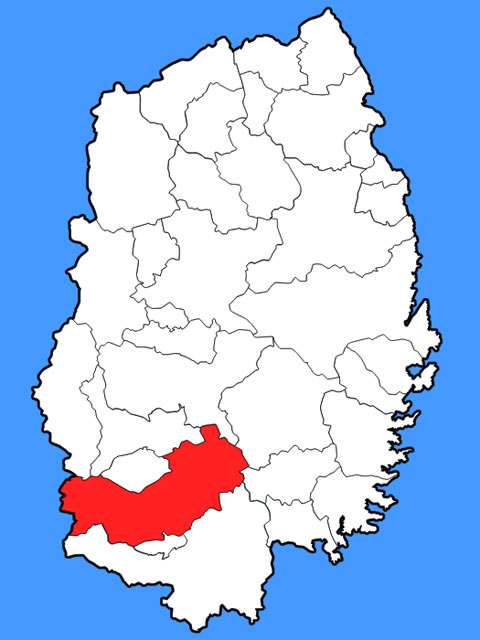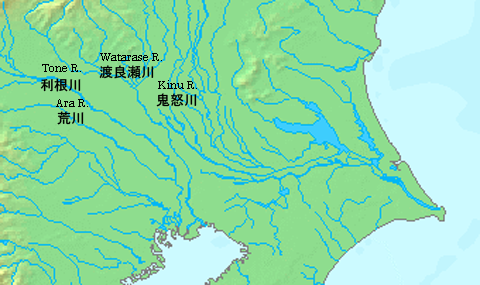Okay so I did some reading about Ryukyu and I've some important notes
Key Points are
Bolded
Aji: Rulers of the gusuku (fortresses) in the archipelago, first independent kings, later then were made the noble class
Yukatchu: merchants
Population
“
Assuming that there were approximately one hundred fortresses on Okinawa by the fifteenth century, and using some reasonable assumptions to extrapolate the population backward in time from seventeenth-century records, there would have been an average of three hundred to five hundred people per fortress. Moreover, fortresses were overwhelmingly concentrated in the southern part of Okinawa.” (Gregory Smits, pg 36) So from
30,000 to 50,000 people in Okinawa, disproportionately in the south.
“
The total population of the Ryukyu kingdom was about 155,637 in 1800. Yaeyama’s population in 1803 was 15,858, which is very close to its population in 1798 (15,957) and 1810 (15,533). Therefore, as of approximately 1800, Yaeyama comprised 10 percent of Ryukyu’s population” (Gregory Smits, pg 238)
“
The population of Nanking alone probably exceeded that of the entire Chuzan kingdom in [1372].” (Kerr 69)
Possible Provinces and Tags
Before I said that
Yaeyama, Mikyako and Yonaguni lived off of subsistence fishing until the Ryukyu kingdom, but I’ve since learned that isn’t true. After reading Gregory Smits’ 2019 book apparently they
grew rice, millet, barley and wheat like the rest of the islands. Thus they
should be regular tags (named after their respective islands).
Regarding Amami Smits states…
“
The appropriate starting place for early Ryukyuan history is the northernmost Ryukyu islands of Kikai, Amami-Ōshima, and Tokunoshima. These islands formed an economic unit and possibly, at times, a political unit.” (Gregory Smits, pg 18)
“
Until approximately the thirteenth century, however, there was a disproportionate concentration of wealth and advanced technology in the Northern Tier [the Amami islands], with Kikai [island] as its administrative center.” (Gregory Smits, pg 20)
“
the fourteenth century was when Okinawa surpassed the Northern Tier as the main center of gravity in the Ryukyu islands.” (Gregory Smits, pg 31)
“
According to the official histories, Shō Toku devoted considerable blood and treasure to pacifying Kikai, which resisted stubbornly. Other Ryukyuan rulers waged war in the Northern Tier.” (Gregory Smits, pg 24)
I think Kikai and Amami should be a polity called Kikai.
If you want to add a lot of potential fun you should also give Okinoerabu to a
wokou pirate tag, “
Okinoerabu served as a pasture for wakō horses, and it was the domain of the wakō leader Guraru Magohachi [~1400]” (Smits, 45)
“
[Okinoerabu] was the residence of wakō chieftain Guraru (Goran) Magohachi, who flourished during the first half of the fifteenth century. Magohachi had close ties with Okinawa.” (Smits, 71)
Kumejima should also be a tag
“
one plunderer is the powerful lord of Kumejima [ ] Kumejima…was the abode of powerful wakō groups…the position of the island itself, provide a commanding view of local sea-lanes…was perfectly situated to profit from, impose tolls on, or raid, commerce…Mount Ōtake and other peaks in Kumejima also provided ideal terrain for fortifications…A natural fortress, Kumejima was a strong power center, and it remained independent of Shuri’s control until Shō Shin’s reign…Kumejima had close ties with Miyako and Yaeyama.” (Gregory Smits, pg 100-101)
It’s important to keep in mind that except for Kikai, in 1337
all of the Ryukyuan islands were likely at similar levels of development and organization (From 1200 to 1400 they were gradually going from independent aji chiefdoms to increasingly centralized confederacies of ajis). All of them were aji confederations often ruled or influenced by Wokou. At best the islands and kingdoms were in reality loose confederations (suspiciously similar to Himiko’s Japan). So either
they should all be tags or none of them. It is far more accurate for them to all be tags since they
did everything tags do (diplomacy, war, taxes, estates, buildings, etc) and should be able to do those things as they
certainly did historically. Also, they all developed external diplomatic relations in the first 100-200 years from 1337 at the very least and operated as political units despite common infighting and leadership disputes. Okinawa simply won out in the power struggle so gets more attention and has better documentation.
Here's the likely
1337, the likely
1400 map and my
proposed 1337 map.
Red = many different aji polities
Green = confederacies of varied centralization (and Kikai, we have no idea how they were truly governed but I think it's reasonable to assume they were a kingdom of some sort)
Orange = Wokou pirate polities
Dashed = Kikai had waxing and waining control over the area
* = With all likelihood they weren't kingdoms at all by this point but they're conventionally called kingdoms despite this
Earlier I said that Okinawa should have Buddhist minorities and while that is true, I want to specify that it
should be specifically Japanese Buddhist, so Shinto. Also, these Buddhists should mostly be not Hemin, they should be Yukatchu or Ajis.
Given what I’ve read I propose three new locations: Kumejima (and the surrounding islands), Kikai and Yonaguni.
Size does
not equal historical importance. I’d argue that
removing Amami off the map is better than removing Kikai based on historical importance.
Yonaguni
https://en.wikipedia.org/wiki/Yonaguni_language
Yonaguni fought wars with its neighbors and exported rice
“
in 1522, Nakasone Toyomiya invaded Yonaguni and destroyed its lord, Onitora.” (Smits, 170)
“
[The leader of Miyako] crossed over to Yonaguni Island beyond. There he overwhelmed the chieftain Untura and seized Untura' s daughter as a prize.“
https://ja.wikipedia.org/wiki/サンアイイソバ
Kikai
“
In 999 Dazaifu reported that indeed Kikai had suppressed the raiders. Although we cannot verify these details, one point to note is the considerable power located in the Northern Tier. Archaeological evidence suggests that Kikai was both under Dazaifu jurisdiction during the tenth century and that the culture of its inhabitants differed from that of nearby AmamiŌshima. The political geography may have been even more complex, with Kikai and a small portion of Kasari peninsula on Amami-Ōshima forming a single political unit.” (Smits, 19)
“
In some medieval Japanese literary texts, the name “Kikai” transformed into boundary zones or lands far across the sea. It sometimes occurred attached to that of other countries, such as “Kikaikōrai” (Kikai + Korea), or as the first term in a list of distant places, as in “Kikai, Kōrai (Korea), Tenjiku (India), Shintan (China).” (Smits, 20)
“
...in Kikai…one hundred and fifty raised buildings, many burial pits, fifty hearths, and thirty ironworking hearths. Goods originating outside of Kikai account for about 70 percent of the total…The [iron] sand provided iron for metalworking. Iron products from Kikai eventually found their way to Okinawa.” (Smits, 20)
“
Kikai was outside of Japanese political control, and economic activity there diversified. Turbo-shell trade and trade in exotic products such as large conch shells and sea-turtle shells remained important, but Kikai also became the distribution center for local and regional manufactured items.” (Smits, 21)
“
Until approximately the thirteenth century, however, there was a disproportionate concentration of wealth and advanced technology in the Northern Tier, with Kikai as its administrative center.” (Smits, 20)
“
Kikai served as the chief distribution center for kamuiyaki. More generally, Kikai served as a major “exchange terminal” within the East China Sea network for a variety of products and people.” (Smits, 22)
“
After demand outstripped local turbo-shell production capabilities during the eleventh century, the Northern Tier began to export kamuiyaki to Okinawa and the southern Ryukyu islands in return for turbo shells. This process encouraged the development of powerful centers to the south, such as Katsuren in Okinawa and the island of Kumejima near Okinawa, which also traded extensively with China” (Smits, 22)
“
[Ryukyu] devoted considerable blood and treasure to pacifying Kikai” (Smits, 24)
“
After an invasion force he dispatched to conquer Kikai failed, Shō Toku personally led an army of two thousand to complete the task.” (Smits, 118)
“
Two household records from Kikai describe warfare and contact with Shuri prior to 1466, roughly sometime in the 1450s.” (Gregory Smits, pg 119)
He even has a whole section in the conclusion called ‘Ryukyu starts with Kikai’. (Smits, 246-7)
Kumejima
“
...Kumejima. Despite their small size, these three islands become significant points of analysis…” (Smits, 8)
“
the island of Kumejima near Okinawa, which also traded extensively with China” (Smits, 22)
“
This [shell trade] set the stage for development of power centers in Okinawa and nearby islands, especially Kumejima.” (Smits, 22)
“
only two physical objects (as opposed to people or deities) are modified by the term kikoe (resounding). They are a royal sword, Tsukushi-chara, and turbo shells (kurokariya) produced at Kumejima” (Smits, 22)
“
The next major development is the rise of large-scale gusuku at various locations in Okinawa, Kumejima…” (Smits, 88)
“
one plunderer is the powerful lord of Kumejima [ ] Kumejima…was the abode of powerful wakō groups…the position of the island itself, provide a commanding view of local sea-lanes…was perfectly situated to profit from, impose tolls on, or raid, commerce…Mount Ōtake and other peaks in Kumejima also provided ideal terrain for fortifications…A natural fortress, Kumejima was a strong power center, and it remained independent of Shuri’s control until Shō Shin’s reign…Kumejima had close ties with Miyako and Yaeyama. For example, Kōntofushi-kawara, a deity worshipped in Taketomi, came from Kumejima. Moreover, a brother and sister deity from Kumejima came to be worshipped as the deity of Mount Omoto in Yaeyama..During the era of Shō Shin’s reign, the island’s thirteen furnaces specialized in different types of iron products, and they lit up the night sky with a red glow. Noting that Kumejima was known as “metal island” because of its abundant iron sand and ironworks, Iha Fuyū suggested that one reason Shō Shin invaded in 1506 was to gain control of its iron industry” (Gregory Smits, pg 100-101)
“
Kimihae in Kumejima was one of these elite territorial priestesses, the only one not a royal household relative. The term kimi referred to a high-ranking priestess.” (Smits, 165)
“
the Kimihae priestess of Kumejima led the force invading Yaeyama.” (Smits, 167)
“
Kumejima was a key point along the sea-lanes connecting the coast of China to the Ryukyu islands and points north. Kumejima was also home to a thriving iron industry. For all of these pragmatic reasons, Shō Shin would have wanted control over the island.” (Gregory Smits, pg 168)
“
Clearly the military campaign or campaigns in Kumejima had a large impact not only on that island but on the formation of Ryukyu’s empire, its officials, and its capital. In addition to economic and political reasons for invading Kumejima, Shō Shin also sought to conquer and appropriate the spiritual and symbolic power of the island.” (Smits, 177)
“[The ruler]
planted mulberry trees on Kumejima to establish silk production there.” (Smits, 208)
Here I sketched out my proposed province map based on historical important and/or uniqueness rather than raw size.
Finally here are some more
historical names for locations in the archipelago from the Omoro, “
Okishima [Ukishima] of Kikai
Moishima of Kikai From Okishima
To Biru [Beru village] in Kasari [northern Amami-Ōshima]
To the Nakasetouchi straits [southern Amami-Ōshima]
To Kanenoshima [metal island, i.e., Tokunoshima]
To Seriyosa [old name of Okinoerabu island]
To Kaifuta [Yoron island]
To Asumori [sacred site at the northern edge of Okinawa]
To Akamaru [Tōbaru in northern Okinawa]
To Sakigyamori [sacred site on Kouri island off northern Okinawa near Nakijin]
To Kanahiyabu [sacred site at Nakijin, northern Okinawa]
To Sakiyoda [Cape Zanpa near Yomitan, central Okinawa]
To Oyadomari [Naha harbor] To Shurimori [sacred grove inside Shuri castle].” (Smits, pg 24-25)
Cultures
Gregory Smits gives some alternative cultural divisions that don’t follow linguistics. I understand it’s the standard you’ve set, but frankly, I prefer cultural boundaries that take more into account so I’m including them.
I would combine Tokara and “Northern Tier” cultures. I would call them Amami (I could not for the life of me find a denonym for what Amami islanders call themselves, either Amami is also the denonym or it’s some hidden secret, I did find Amamibito (Amami people) but that’s Japanese) or Kikai as Kikai is the source of the culture not Hokuzan.
George Kerr even referenced the distinction
“
Even today the people of central Okinawa, who consider themselves more sophisticated, apply the term yawbara to the people of northern Okinawa, a name which has some of the belittling connotation of the term "hillbilly" in American slang. They continue to be marked off by strong local dialect variations and by a significant number of curious everyday customs, habits, and traditions, enough to suggest the possibility of a strong differentiation” (Kerr, 61)
“
Tokara mariners resided in Naha to help manage commerce and navigation” (Gregory Smits, pg 174)
“
Naha was a mixed port city in which people from various parts of Japan, the Tokara islands, and China lived” (Gregory Smits, pg 220)
There should be a few of them in southern Okinawa
Yakushima and Tangashima were possibly, but unlikely the location of a Ryukyuanish culture or at least a significantly divergent Japanese culture from around the end of Old Japanese. I can’t find much of anything between about 800-1500 (although there’s some de jure administrative reshuffling around 1200-1400, not sure if that means anything) so you could justify having this culture there in 1300 but it’s a black void from what I can find. It seems the islands were barely controlled by Japan, few to no taxes were collected and few to no soldiers were raised. If there is a culture it could be called Yaku as they were called in the 700s.
A point in favor of distinctness “
[the Tokara cultural zone] may also include the islands of Yakushima and Tanegashima.” (Gregory Smits, pg 27)
One of the Smits’ big themes is how interconnected Ryukyu really was, there was a
continuous trickle of Korean and especially Japanese people coming to the islands. This should be reflected by
small minorities across entire archipelago, moreso the further north [in raw numbers not necessarily percentage] and especially in Naha. This should increase during Japan and Korea’s internal strife.
Here's my
proposed culture map excluding foreign minorities
Harbors
Naha, “
...three freshwater rivers emptied into Naha harbor. This inflow suppressed the growth of coral reefs and helped Naha became a prosperous international port.” (Gregory Smits, pg 23)
Government Types
Considering a lot of the previous information I brought up about the early polities of the Ryukyuan archipelago being confederacies of various ajis it might be better for them to be the tribal government type rather than a kingdom as they certainly weren’t kingdoms in the sense most people understand it. Also when you unite the archipelago you can form Ryukyu and become a kingdom. Also all polities should be able to form Ryukyu not just the ones on Okinawa.
Resources (tl;dr at bottom)
“
[Amami-]Ōshima (twenty ships): newly made tools, liquor, vegetables, and tax rice;
Miyako (eighteen ships): superior cloth, lesser cloth, coarse hemp, and rope for ships;
Yaeyama (ten ships): white rice, barley;
Kumejima (nine ships): cotton cloth, millet (awa), and millet (kibi);
Kikai (five ships): polished rice, millet (hie), and buckwheat.” (Gregory Smits, pg 188)
Taxes received in Shuri in 1606
Amami Islands:
Iron: “
Iron sand has been discovered at the Maehata and Ōufu sites within the group. The sand provided iron for metalworking. Iron products from Kikai eventually found their way to Okinawa.” (pg 20)
Yet Amami seems to still be a net importer, “
People in the northern Ryukyu islands acquired iron and iron goods mainly via the shell trade.” (Gregory Smits, pg 22)
Shells:
“Turbo-shell trade and trade in exotic products such as large conch shells and sea-turtle shells remained important” (Gregory Smits, pg 21),
“Matsunoto in the Kasari peninsula of Amami-Ōshima was a major turbo shell processing site.” (Gregory Smits, pg 22)
Clay: “
Especially significant was kamuiyaki stoneware, produced mainly in Tokunoshima and shipped throughout the Ryukyu islands and as far north as Kyushu;” “Kilns have been found elsewhere in the region, but Tokunoshima was the main manufacturing site, and Kikai served as the chief distribution center for kamuiyaki.” (Gregory Smits, pg 21-22) Even has its own wikipedia page (
https://en.wikipedia.org/wiki/Kamuiyaki_ware)
Ryukyu often traded
lumber for goods so
there should be a lumber province on Okinawa (also the island is literally a
tropical forest) [To Embrace and Protect: Managing Wind, Water, and Trees in the Ryukyu Kingdom by Byyun Chen, “
Ryukyu, which lacked minerals but was rich in timber, had been able to sustain itself by importing metal from Satsuma in exchange for wood”)
The only legumes I could find were ‘
possibly’ beans. Clearly, even if they were grown, they were not significant. The vast majority of their diet was rice, local foods (fish), and grains like wheat and millet. I think the
legumes should be removed and replaced with more significant goods.
From what I’ve read
tea trees were
not present in Ryukyu until the 1600s,
Tea should then be an import. Also even if there was tea it wasn’t a significant part of their domestic production and export economy, I still think it should be excluded.
Stone (specifically Ryukyu Limestone) is a possible resource, it was used a lot and mined in central/southern Okinawa. Unlike all the other goods (besides subsistence goods like rice) I can’t find much evidence of stone export.
Salt is a possible resource, Ryukyu was known for its high quality salt, especially that from Yaeyama.
“
More broadly, we know of roughly one hundred and fifty ironworking sites in villages unconnected with large gusuku. These sites produced “Weapons, armor, agricultural tools, fishing tools, building tools, knives, and iron cauldrons.” In 1376, Chinese Ministry of Justice Vice Minister Jì Hào returned from Ryukyu after purchasing forty horses and 5,000 jīn of sulfur. He reported a low demand there for luxury items such as silk, figured cloth, or gossamer fabric. Instead, Ryukyuans valued porcelain and metal axes. It makes sense, of course, that most Ryukyuans of the time would have prized items of practical utility” (Gregory Smits, pg 94) “Swords from Okinawa became popular export items during the fifteenth and sixteenth centuries.”(Gregory Smits, pg 99) If reasonable the Ryukyuan archipelago should be importing iron and
producing various iron items for export.
Okinoerabushima’s wokou exported
horses to China, “
If an early Ming emperor needed several hundred head of military horses and was willing to pay a high price for them, wakō groups in…Okinoerabu island had the livestock and know-how to convey them to China.” (Smits, 40-1)
“
The main horse pasture in the Ryukyu islands was Okinoerabu, whose topography is mostly flatland atop a raised coral reef.” (Smits, pg 71)
“
The tribute goods delivered to China included Okinawan textiles, sulphur (from Tori-jima), and horses, which the Chinese appear to have valued highly.” (Kerr 66)
“
...turbo shells (kurokariya) produced at Kumejima.” (Smits 22)
Finally want to bump the sulfur guy (link:
https://forum.paradoxplaza.com/foru...s-44-1st-of-january-2025.1724420/page-5#posts)
So my recommendations based off what I’ve read
Kikai: Iron or Fish
Amami: Shells or Rice
Tokunoshima: Clay
Okinerabushima: Horses
North Okinawa: Rice
Central Okinawa: Lumber
Southern Okinawa: Sturdy Grains
Kumejima: Shells or Iron
Miyako: Fish or stone
Yaeyama East: Pearls
Yaeyama West: Salt
Yonaguni (if there): Rice or Fish
Thank you for reading,
may Amamikyu bless glorious Ryukyu
Sources:
Okinawa History of an Island People by George Kerr
Maritime Ryukyu 1050-1650 by Gregory Smits




 As it happens in China, the “Goryeo dynasty” name is actually not the name of the dynasty itself, which is actually the house of Wang.
As it happens in China, the “Goryeo dynasty” name is actually not the name of the dynasty itself, which is actually the house of Wang.














 Here (as well as with the areas next) we have tried to follow the administrative division of both countries in period, but we’ve had to make some adjustments. In Korea, we had to account for the fact that historically, almost immediately after the start of the game the Josen dynasty took over and the administrative divisions are somewhat different, so we’ve adjusted them together (and had to divide some of the bigger provinces for gameplay reasons). In Japan, the administrative divisions remained virtually unchanged since the establishment of the Ritsuryō system in the 7-8th century until after the Meiji restoration in 1868. However, we still had to make some adjustments, and the smaller ones had to unfortunately disappear.
Here (as well as with the areas next) we have tried to follow the administrative division of both countries in period, but we’ve had to make some adjustments. In Korea, we had to account for the fact that historically, almost immediately after the start of the game the Josen dynasty took over and the administrative divisions are somewhat different, so we’ve adjusted them together (and had to divide some of the bigger provinces for gameplay reasons). In Japan, the administrative divisions remained virtually unchanged since the establishment of the Ritsuryō system in the 7-8th century until after the Meiji restoration in 1868. However, we still had to make some adjustments, and the smaller ones had to unfortunately disappear.












 Not bad areas for resources, and plenty of rice and fish in Japan to get good sushi. The more observant of you will see that the resources of Hokkaido have already been adjusted thanks to feedback from the previous Manchuria Tinto Maps.
Not bad areas for resources, and plenty of rice and fish in Japan to get good sushi. The more observant of you will see that the resources of Hokkaido have already been adjusted thanks to feedback from the previous Manchuria Tinto Maps.







 Not much to say here, except that quite a bit of population waiting for some action.
Not much to say here, except that quite a bit of population waiting for some action.


 I’m sure many of you were waiting for this. The samurai clans in Japan are represented as Extraterritorial Countries, and we have tried to be as close as possible to their distribution of territory in 1337. As you can imagine, that is not an easy task, and some more tweaking is needed, so if you have any feedback or extra info on that regard it would be much appreciated. Unfortunately, there’s some overlapping of some clans on the same territory and only one name can be shown at a time, so not all names are visible (the Oda clan is still there, I promise), but there are a total of 143 clans (not counting Ashikaga), plus two extra for each of the imperial courts that are present at start. Related to this, each clan will pledge its allegiance to either the northern or the southern court, mainly based on their historical allegiances but allowing a bit of leeway (and those allegiances don’t necessarily have to be permanent). So, as a bit of an extra tease, these are the allegiances of the clans at start (yellow are the north court supporters, blue are the southern court ones, and again keep in mind that only one color can be present even if there’s more than one clan with different allegiances in the same location)
I’m sure many of you were waiting for this. The samurai clans in Japan are represented as Extraterritorial Countries, and we have tried to be as close as possible to their distribution of territory in 1337. As you can imagine, that is not an easy task, and some more tweaking is needed, so if you have any feedback or extra info on that regard it would be much appreciated. Unfortunately, there’s some overlapping of some clans on the same territory and only one name can be shown at a time, so not all names are visible (the Oda clan is still there, I promise), but there are a total of 143 clans (not counting Ashikaga), plus two extra for each of the imperial courts that are present at start. Related to this, each clan will pledge its allegiance to either the northern or the southern court, mainly based on their historical allegiances but allowing a bit of leeway (and those allegiances don’t necessarily have to be permanent). So, as a bit of an extra tease, these are the allegiances of the clans at start (yellow are the north court supporters, blue are the southern court ones, and again keep in mind that only one color can be present even if there’s more than one clan with different allegiances in the same location)





















































